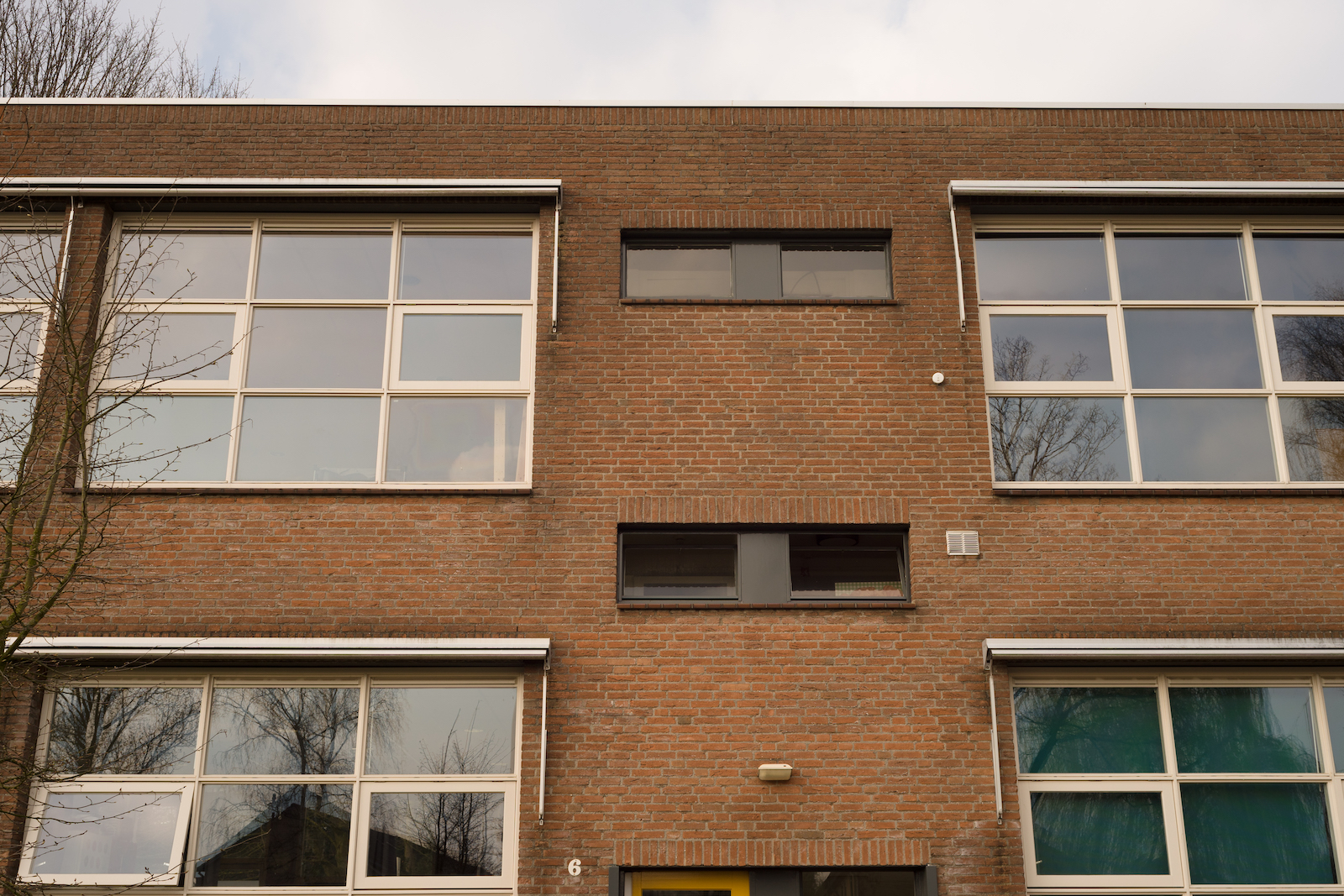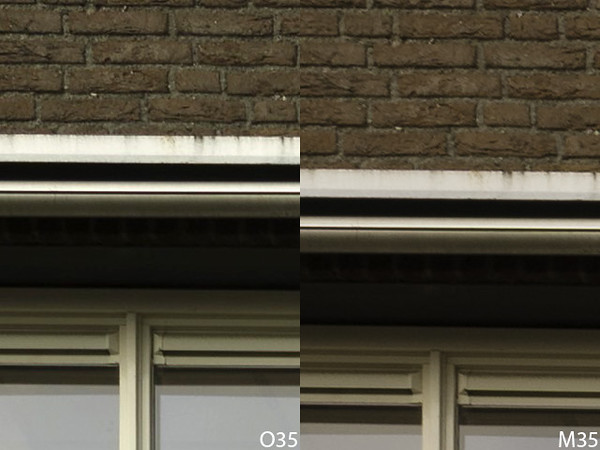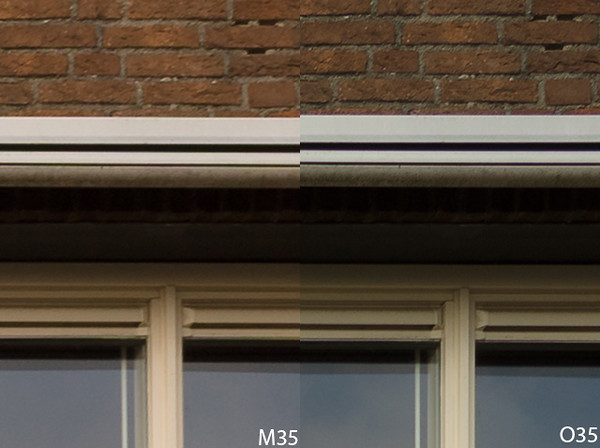That’s the question. Do I use a shift lens or a conventional lens and apply transforms later in Lightroom?
To find out I took the Olympus OM Zuiko Shift 35mm 1:2.8 out together with a Minolta MD W.Rokkor 35mm 1:2.8, a very good landscape lens in my experience, and headed off to a suitable target in my neighbourhood. The Sony A7 camera was mounted on a tripod and set to A mode, aperture f/11 was used throughout.
The Olympus OM Zuiko Shift 35mm 1:2.8 with a shift of 12mm upwards, its maximum when used in landscape orientation. No transforms were applied afterwards and the camera was level.

Now the Minolta MD W.Rokkor 35mm 1:2.8, tilted backwards to get the top of the building in the picture…

… and transforms applied in Lightroom to straighten the verticals.

Not the same framing of the building here as in the first picture. It’s hard to predict how the straightened result will look like when you’re taking the actual picture. I took four with different angles and this one came closest. That’s a definite advantage of using a shift lens: no guessing needed how the picture will look like when you’re out there in the field. That’s why I fell in love with shift lenses, what you see is what you get.
However, the shift lens is at a disadvantage when it comes to geometric distortion. Look carefully at the first picture and you’ll see that the roof top is slightly curved outwards in a pincushion fashion. And the lower two sunscreen bars show barrel distortion in the upward direction. Click on the picture for a larger size version if you have trouble seeing it. In the lower two pictures I can’t discover any distortion, showing the benefits of a custom-made profile for the Minolta lens.
What about sharpness? Unfortunately the pictures are differently framed but we still can have a look.
 In the upper right corner there is a slight advantage for the Olympus shift lens.
In the upper right corner there is a slight advantage for the Olympus shift lens.

The upper left corner shows even more difference, the Olympus is clearly sharper here.
Wrapping it up:
- The shift lens allows you to make your composition in the frame right away, no guessing. 1 point to the shift lens.
- Distortion is difficult to eliminate when applying shift. 1 point to the normal lens.
- All these transforms detract from image quality of the normal lens. 1 point to the shifters.
A victory for shift, but not a landslide. Shifting can still be useful, but the distortion really bothers me. I think I’ll hold on to my shift lens. For now.
